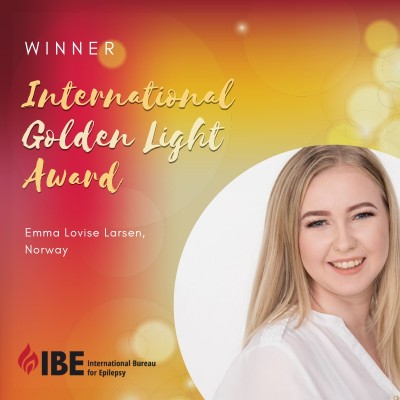

We all have a choice in how we tell our own story. You can tell it like they do in novels or romantic flicks, where everything is so dramatic or just very superficial. However, we all know that those movies are hardly ever the truth. And no matter what challenge life gives you, you also have a choice in how you deal with it and how you live our life. The epilepsy was going to be mine challenge. Luckily, for me I have always had a supporting family and friends by my side, who treated me as a “normal” teenage girl and let me have a “normal” childhood even If I had epilepsy.
I used to call the hospital my second home, so I have a lot of experience as a patient. Some of them are good and some of them are not. I think the worst thing was the feeling of never having anyone to talk too. I always had my mom and dad, friends and family but they could never completely understand how it really was. Therefore, I decided that I wanted to spread information and be a spokesperson for those who feels alone, for those who feel like they have no one or no one to talk to, for the people who just need someone to understand them. I felt like there was too little information about epilepsy, not just about the seizures but also all the additional challenges
This is why I started a blog and took part in a book project, which told my epilepsy story. At the book release, I was recruited into the Norwegian epilepsy association. One year later, I was sitting as a leader for the epilepsy federation youth Norway and writing for their blog. I was also sitting in the youth council at my local hospital. My focus has always been positive, because I feel if your attitude is negative, everything surrounding your epilepsy will also become negative.
What are my responsibilities
Every year we host two camps for youth with epilepsy, where our focus is on developing self-efficacy, safety and learning. We want our participants to feel good about them self and their own epilepsy. I get to take part in the planning of these camps, and I get to supervise the participants. One of my responsibilities here is to check that everything is going according to plan, but the best part is to talk and communicate with the participants. I am also a part of a local branch of the association, and I have responsibility for hosting youth activities. These activities reaches out to all youth with epilepsy in my local community. I enjoy supporting and communicating with the youth during these activities.
I am also the leader of our national youth council. Here we guide the Norwegian Epilepsy Association in which direction their work with youth is going. I get the chance to implement my thoughts and values regarding youth and epilepsy. I want everyone with epilepsy to feel that they can participate in the same activities as their friends, even with a chronic decease. I also want youth with epilepsy to start thinking ahead, and not give up on life.
Last year I also held over 10 lectures about epilepsy, with an attendance between 30-450 participants. I held these lectures all over the country. I talk about my own experiences, facts about epilepsy, additional challenges, the transition between youth and grown up and a lot more.
When I was young, some people told me “you can’t do anything with epilepsy”. I wanted to prove them wrong. That’s why I want people to understand that no matter if they have epilepsy or not, there are no limits in life. Maybe you have to find another way to reach your dreams, but with hard work, you can do it. The only person who has to believe it, is you. It took a long time before I realized it myself but now, I am where I want to be in my life. My epilepsy created many challenges for me through my childhood, but I have learned a lot and I could not be happier right now. I want to give these experiences to other people with epilepsy.
